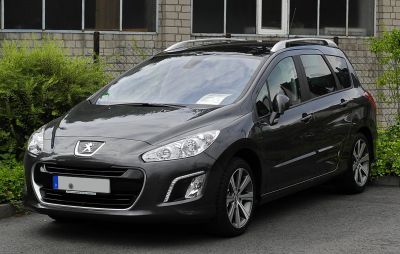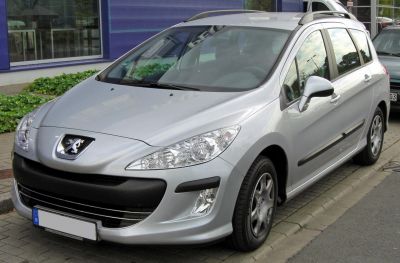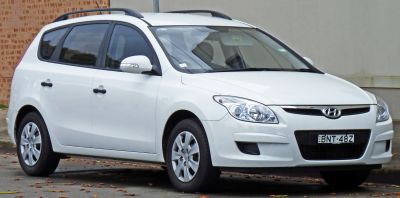 2010 Hyundai i30 I CW (facelift 2010) Dimensions, Size & Specs
2010 Hyundai i30 I CW (facelift 2010) Dimensions, Size & SpecsMeasurements of the 2010 Hyundai i30 I CW, engineered for optimal performance and comfort
| Dimensions | |
|---|---|
| Length: | 4500 mm177.2 in14.8 ft |
| Width: | 1775 mm69.9 in5.8 ft |
| Height: | 1565 mm61.6 in5.1 ft |
| Ground Clearance: | 135 mm5.3 in0.4 ft |
| Trunk Capacity: | 415 liter14.7 cu ft |
| Trunk Capacity (Max): | 1395 liter49.3 cu ft |
| Weight Specifications | |
| Curb Weight: | 1236-1341 kg2725-2956 lbs |
| Maximal permitted Weight: | 1820-1940 kg4012-4277 lbs |
| Tire Specifications | |
| Rims Size: |
|
| Tire Size: |
|
The Hyundai i30 I CW facelift (2010-2012) represents the station wagon variant of Hyundai's popular i30 model, offering practicality combined with sleek design typical for compact family cars of that era. With a length of 4500 mm (177.2 inches), a width of 1775 mm (69.9 inches), and a height of 1565 mm (61.6 inches), this generation balances spaciousness and manageable exterior dimensions suitable for urban and suburban driving. The vehicle's curb weight ranges from 1236 to 1341 kg (2724 to 2957 lbs), reflecting its construction which prioritizes fuel efficiency without compromising stability. Maximum weight capacity is between 1820 and 1940 kg (4012 to 4279 lbs), accommodating passengers and cargo comfortably. The i30 I CW’s ground clearance of 135 mm (5.3 inches) ensures reasonable ride height for everyday road conditions. It rides on 15-inch rims paired with 185/65 R15 H tires, offering a stable and comfy driving experience. When it comes to storage, the station wagon excels with a luggage capacity of 415 liters (14.6 cubic feet) behind the rear seats. Folding the rear seats multiplies cargo space dramatically to 1395 liters (49.2 cubic feet), making it ideal for transporting larger items or packing for extended trips. This facelifted i30 I CW perfectly suits drivers needing a versatile, mid-size station wagon with balanced dimensions, practical storage solutions, and efficient performance for the 2010 to 2012 model years.
Discover the standout features that make the 2010 Hyundai i30 I CW a leader in its class
Have a question? Please check our knowledgebase first.
The Hyundai i30 I CW facelift 2010 station wagon measures 4500 mm (177.2 inches) in length, 1775 mm (69.9 inches) in width, and has a height of 1565 mm (61.6 inches). These dimensions contribute to a balanced and moderately sized wagon suitable for both urban and family use, offering good road presence without being overly bulky.
The curb weight of the Hyundai i30 I CW facelift 2010 ranges between 1236 kg to 1341 kg (2724 - 2957 lbs), depending on the trim and engine configuration. Its maximum permissible weight varies from 1820 kg to 1940 kg (4012 - 4277 lbs). The curb weight reflects the vehicle’s unloaded condition with standard equipment and necessary fluids, whereas the maximum weight includes passengers and cargo.
The Hyundai i30 I CW facelift 2010 offers a luggage capacity of 415 liters (approximately 14.65 cubic feet) with all rear seats in place. When the rear seats are folded down, the luggage space significantly expands to 1395 liters (about 49.24 cubic feet). This versatility makes it practical for families or users needing additional cargo space for longer trips or bulky items.
The ride height of the Hyundai i30 I CW facelift 2010 stands at 135 mm (5.31 inches). This ground clearance is typical for a station wagon of its class, striking a good balance between comfort, road handling, and the ability to clear common urban obstacles such as speed bumps or uneven parking surfaces.
This generation of Hyundai i30 utilizes 15-inch rims paired with tires sized 185/65 R15 H. The 15-inch rim size is common for compact station wagons, offering a comfortable ride and good fuel efficiency, while the tire size balances grip and rolling resistance for everyday driving conditions.
Yes, the Hyundai i30 I CW facelift 2010 station wagon fits comfortably into a standard garage. With a length of 4500 mm (177.2 inches), width of 1775 mm (69.9 inches), and height of 1565 mm (61.6 inches), it generally fits within typical garage dimensions commonly ranging around 2400-2700 mm in width and 4800-5400 mm in length. However, users should verify their specific garage size to ensure adequate space for maneuvering and additional storage.
Compared to its predecessor, the pre-facelift Hyundai i30 I CW, the 2010 facelift did not significantly alter the exterior dimensions, maintaining the length at approximately 4500 mm (177.2 inches), width around 1775 mm (69.9 inches), and height near 1565 mm (61.6 inches). The facelift mainly focused on aesthetic updates and technological improvements, while preserving the same practical dimensions for cargo and passenger space.
In comparison to similar compact station wagons like the Ford Focus Wagon or Volkswagen Golf Variant from the same period, the Hyundai i30 I CW facelift 2010 holds competitive dimensions. Its length of 4500 mm (177.2 inches) is average, and its luggage capacity of 415 liters (49.24 cubic feet with seats folded) is quite practical. While some competitors may offer slightly larger luggage or passenger spaces, the i30 balances compact exterior proportions with efficient interior volume, appealing to budget-conscious buyers seeking reliability and good space utilization.
The Hyundai i30 I CW facelift 2010 offers several practical advantages for daily use. Its moderate size allows easy maneuverability in urban environments and parking, while the generous luggage capacity of 415 liters (up to 1395 liters with seats folded) supports family or cargo needs. The 135 mm ground clearance suits city roads and light rural driving. Additionally, the well-calibrated 15-inch tires contribute to a comfortable ride. Overall, the car’s combination of size, versatility, and reasonable weight (1236 - 1341 kg curb) makes it a practical choice for daily commuting and weekend trips.
The 2010 facelift of the Hyundai i30 I CW station wagon represents Hyundai's effort to refresh their popular compact wagon with updated styling and improved equipment while retaining the robust and practical characteristics of the original model line (2007-2012). It helped Hyundai remain competitive in the compact station wagon segment by enhancing visual appeal, safety features, and overall refinement. This generation set the stage for future Hyundai i30 models by emphasizing value, practicality, and quality in a segment often dominated by European manufacturers.
Discover similar sized cars.

| Production: | 2011-2014 |
|---|---|
| Model Year: | 2011 |
| Length: | 4500 mm177.2 in |
| Width: | 2038 mm80.2 in |
| Height: | 1555-1564 mm61.2-61.6 in |

| Production: | 2008-2011 |
|---|---|
| Model Year: | 2008 |
| Length: | 4500 mm177.2 in |
| Width: | 2038 mm80.2 in |
| Height: | 1496-1564 mm58.9-61.6 in |

| Production: | 2008-2010 |
|---|---|
| Model Year: | 2008 |
| Length: | 4475 mm176.2 in |
| Width: | 1775 mm69.9 in |
| Height: | 1565 mm61.6 in |
